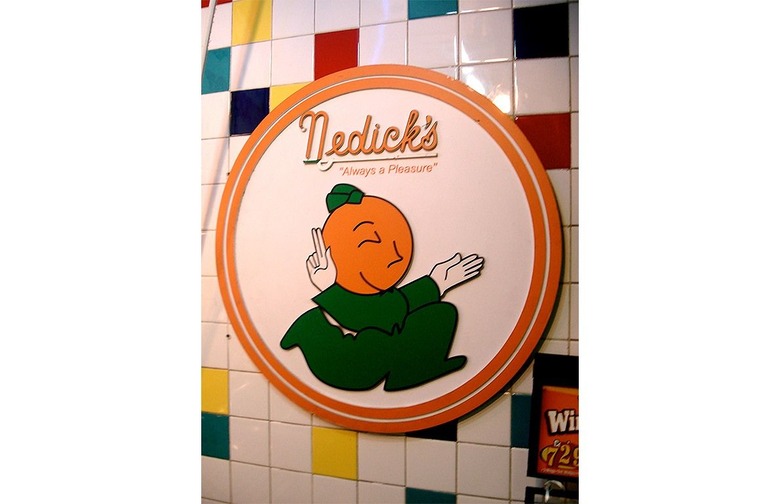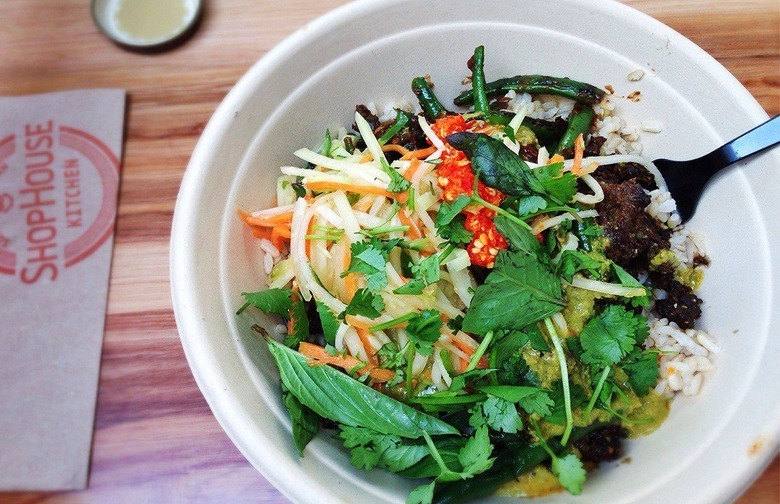10 Chain Restaurants We Bet You Didn't Even Know Were Gone Slideshow
Like all businesses, chain restaurants come and go. Some burst onto the scene and give the impression that they'll be around forever, like Applebee's and Burger King, and some simply fade away without so much as a whimper (aside from a news story or two). These 10 chains fall into the latter category.
All Star Café
Even though there were only 10 locations of the Planet Hollywood-owned All-Star Café in its late '90s-heyday, odds are you knew about this chain, especially if you were a kid during the decade. Sports icons such as Andre Agassi, Joe Montana, Ken Griffey Jr., and Shaq all invested in the project, and some appeared in commercials for it. It opened in prime locations across the country, including New York City's Times Square and Walt Disney World in Orlando. The chain was equal parts gift shop, memorabilia store, and restaurant, but it never quite had the same appeal as similar theme restaurants like Planet Hollywood itself or the Hard Rock Café. The last All-Star, located in Walt Disney World's Wide World of Sports, closed in 2007.
Casa Bonita
A visit to Casa Bonita, which had five locations — in Tulsa; Lakewood, Colo; Oklahoma City; Fort Worth; and Little Rock — always promised a good time. Some locations could seat more than 1,000 guests, and restaurants were decked out to look like a Mexican village, complete with a village square, a cave, a tropical garden with a stream and waterfall, mariachis, a theater, and arcades. (The Colorado location even had cliff divers, immortalized in an episode of South Park.) The first location, in Tulsa, opened in 1971, but now the Lakewood location is the only one that's still in business.
Chi-Chi’s
The first Chi-Chi's Mexican Restaurant opened in downtown Minneapolis in 1975 and was one of the breakout restaurants of the year, pulling in $2 million. Founders Marno McDermott and Max McGee had found a niche with basically no competition in the Midwest, and by 1986 a whopping 237 locations had been opened, with 42 opening in 1985 alone. From there, unfortunately, it was all downhill. Attempts at expanding to New York City, New England, and the South failed, and increased competition, combined with baby boomers aging out of the chain's target demographic and a decline in alcohol consumption, spelled its doom. Locations fell to 144 by 2002, and a month after Chi-Chi's filed for bankruptcy in 2003, green onions served at a Pittsburgh-area outpost set off the largest hepatitis-A outbreak in American history, sickening 660 and killing at least four. The remaining 65 restaurants closed the following year, and today the brand exists in the United States only as a salsa product owned by Hormel, which licensed their name. Oddly enough, there are a dozen Chi-Chi's still open in Europe, nine of them in Belgium.
Howard Johnson’s
Howard Johnson's is synonymous with 1950s and '60s dining. It was launched by Howard Johnson himself in the 1920s as a soda fountain and lunch counter, and by 1954 there were 400 outposts in 32 states. One of the first major restaurant chains (with a menu created by none other than Jacques Pepin), it went public in 1961 with 605 restaurants and 88 motor lodges, both of which were major fixtures dotting the new American highway system that experienced monumental growth during this time. The company peaked in in the mid-1970s, but business fell off after that. The business model of serving pre-made high-quality food in traditional dining rooms lost popularity amid the boom in fast-food chains like McDonald's, and after many changes in ownership over the years, only one Howard Johnson's restaurant remains, in Lake George, New York.
Kenny Rogers Roasters
If you best remember Kenny Rogers Roasters from a classic Seinfeld episode, you're not alone. This chain, which the singer launched in 1991 along with KFC mogul John Y. Brown, expanded to 425 locations, but a country singer's name and a focus on rotisserie chicken didn't exactly make it stand out in an already crowded field, and it went bankrupt in 1998 after being bought by Nathan's. While there's only one U.S. outpost still in business — in Ontario, California — it's doing surprisingly well in Asia, where there are more than 100 locations.
Nedick’s
Nedick's got its start in New York in the 1920s, selling orange drink, coffee, donuts, and hot dogs, and by the 1950s it had expanded to nearly every major city along the Eastern Seaboard north of D.C. It actually shut down in the early 1980s, but was briefly resurrected by the Riese Organization, which manages chains including Friday's, Pizza Hut, and KFC in New York, in 2003. Three new Nedick's locations opened in high-profile New York locations that year, but they've all since closed.
Pancho’s Mexican Buffet
Pancho's was founded in El Paso in 1958, and its all-you-can-eat buffet made it a hit in states including Arizona, New Mexico, Oklahoma, Louisiana, and Mississippi. There were 55 locations open at its peak in 1988, but all corporate-owned locations closed down in 2012 and only a handful of franchises remain in business today.
ShopHouse Southeast Asian Kitchen
ShopHouse was Chipotle's (yes, that Chipotle's) attempt to replicate its successful fast-casual model, but with a Southeast Asian approach. The first location opened in September 2011 in Washington, D.C, and it was hailed when it opened as a major success thanks to its format of letting customers choose a base (noodles, rice, or salad), meat, seasonal vegetables, sauce, garnish, and topping. It rolled out at a slower pace than expected, though — no new locations opened in 2012, with only five in 2013, four in 2014, and one in 2015 — and as of July 2016 only 15 locations had opened. In October of that year founder Steve Ells announced that Chipotle wouldn't be investing any more money into building the brand, and all locations shut down in March of this year, adding to the company's worries.
Steak & Ale
This brainchild of Norman Brinker, who also gave us Jack in the Box and Chili's, didn't do quite as well as his other inventions. Launched in Dallas in 1966, it popularized the self-service salad bar and did gangbusters in its first years (selling an eight-ounce filet for $1.95 didn't hurt), and by 1976, when Brinker sold the chain to Pillsbury, there were 109 restaurants in 24 states. This was the beginning of a major boom in fast-casual dining, however, and the chain just couldn't keep up. Metromedia eventually purchased the brand, and shut down the last 50 locations in 2009. Against all odds, new locations are actually beginning to open in Mexico, but there's no sign that they'll be returning to the States any time soon.
White Tower
This early chain, which began in Minneapolis in 1926 as a blatant White Castle knock-off (right down to the fake turrets), opened more than 120 locations before White Castle sued them in the early 1930s. White Tower settled by paying White Castle $82,000 and changing their look to Art Deco. The chain stuck around for a while longer, peaking at 230 locations in the 1950s, before folks began to move away from the urban areas where they were located. The last one shut down in Toledo, Ohio, in 2004.










